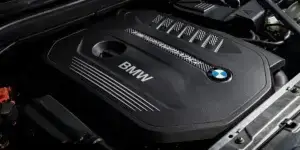Congratulations on your new car!
So you’ve bought yourself a car. Congratulations! Hopefully, it’s just what you wanted, you’re pleased with your purchase and it’ll provide you with many miles of happy motoring. To make sure it does, you need to look after it properly, and that means getting it serviced according to the manufacturer’s guidelines.
If you don’t, it could have an impact on your warranty and your car won’t run as smoothly as it ought to. Regular, high-quality servicing keeps your car in good shape and will save you money in the long run by avoiding costly breakdowns and repairs.
What is car servicing?
A car service is a series of checks and tweaks carried out by a mechanic, which together make sure your car is working as it should.
During a service, the mechanic will check over your brakes, steering, suspension, and other mechanical and electrical systems. If your car has a petrol or diesel engine, they’ll change certain fluids in the engine and gearbox to remove any old, dirty stuff and replace it with clean, fresh fluids.
There might be other jobs they carry out depending on the car you own and whether you’re having an interim, major or full service carried out.

What are Interim, Major, and Full Services?
These descriptions refer to the amount of work that’s done on your car.
Interim Service
An interim service usually involves draining and refilling your engine oil, as well as swapping the oil filter for a new one, to remove any gunk that’s built up over time. There’ll also be a visual inspection of certain components. This is typically recommended every 6 months or 6,000 miles.
Major Service
During a major service, the mechanic will usually carry out a few more checks and change a couple more filters – usually, your air and fuel filters will be changed, and they might also change the filter that helps block nasty particles from entering the car through the ventilation system. This is typically recommended every 12 months or 12,000 miles.
Full Service
A full service will add even more items – exactly which will depend on the car, but in a petrol car, you can expect your spark plugs to be changed and you might also have your coolant, power steering fluid, gearbox, and/or brake fluid drained and replaced. This is typically recommended every 24 months or 24,000 miles.
Which service your car will need will depend on its age and mileage and often which type of service was carried out the previous year.

How often should I service my car?
Car manufacturers recommend when you should get your car serviced, based on mileage or time, for instance every 15,000 miles or 24 months. The time limit only applies if you haven’t reached the mileage limit.
This is roughly the sort of time and mileage at which most cars will need servicing, but it varies slightly from car to car. Some high-performance cars may need servicing more frequently, while high-mileage (often diesel-powered) cars might be on a ‘variable’ service schedule, which means they won’t need to be serviced as often.

What’s the difference between fixed and variable service schedules?
Fixed Servicing
Traditionally, every car would have a fixed servicing schedule set out by its manufacturer and listed in the handbook that comes with the car.
Variable Servicing
As cars have become more sophisticated, on-board electronics mean that many can now monitor fluid levels and usage automatically and effectively decide for themselves when they need to be serviced. This is called variable or ‘flexible’ servicing. When it’s nearly time for a service, you’ll get alerted with a message on the dashboard along the lines of ‘service due in 1000 miles’.
Variable servicing is aimed at drivers that cover more than 10,000 miles per year and spend most of their time on the motorway, since it doesn’t cause as much stress on a car’s engine as town driving. Depending on the model, new car buyers can choose between fixed and variable service schedules. If you’re buying a used car, you should find out which one it’s on. It’s often possible to switch from one to the other simply by pressing the right buttons or settings on the car’s dashboard, but it’s worth getting it done at a service centre when you have your car serviced since the technicians will be able to check that it’s been done correctly.

How do I find out my service schedule?
Your car should have a service book that will give you details of your car’s service schedule.
If you don’t have your car’s service book, you can always contact the manufacturer directly or check their website for details. As long as you know the year, model, and engine type of the car you own, you should be able to find its service schedule easily. Check more on vehicle checks.

What is a service book?
A service book is a small booklet that’s supplied with a new car. It contains information on its servicing requirements, as well as several pages where dealers or mechanics can add their stamp and write the date and mileage on which each service was carried out. If you’re buying a used car, you should make sure that the service book is included with it (it’s usually kept in the glove compartment).
Do I need to stick to my car’s service schedule?
In an ideal world, yes. The longer you leave it between services, the more potential there is for dirt or debris to build up in your car’s mechanical parts and the less chance there is for any potential problems to be spotted and nipped in the bud.
Worse still, if your car’s still within its warranty period, the manufacturer could – in fact, almost certainly will – void the warranty if servicing isn’t carried out on time. And that could leave you footing a big bill for a repair that you might not have had to.

What happens if I miss a service?
It isn’t the end of the world. Your car is unlikely to break down immediately. However, it’s advisable to get your service booked in as soon as you can when you realise. That way, you can get the car checked and attended to before it’s too late.
Don’t just leave it until the next service is due though. Not only will you be putting extra wear on your engine, but missed services in a car’s service history can often have an effect on its value.

What does a service history mean?
A service history is a record of servicing that’s been carried out on a car. You might have heard the phrase “full service history” before. This means that a car has had all of its servicing carried out on time, and has records to prove it.
A service history usually comes in the form of a series of stamps in the car’s service book or a sheaf of invoices from garages where the servicing has been carried out. Remember, a service history is only full and complete if there’s proof of all of the services that have been required by the manufacturer’s schedule having been carried out, not just some of them. So on any used car you’re planning to buy, check the date and mileage next to each stamp, so that you can make sure no services have been missed along the way.
Check our guide on buying a used car.

What’s the difference between a service and an MOT?
A service maintains your car and keeps it in good shape. An MOT test is a legal requirement that checks whether your car is still roadworthy and which has to be carried out every year once the car is three years old.
In other words, you don’t legally need to have a service done, but you are required to get your car MOT’d every year if you want to keep driving it on the road. Many people get their car’s service and MOT carried out at the same time because it means they only need to visit the garage once, rather than arranging two separate trips, saving both money and time.
Learn more about MOT requirements.
How much does a service cost and how long does it take?
This will depend on the type of car and the type of service. For example, an interim service at your local mechanic could cost you as little as £90. However, a full service on a big, complicated car at a prestigious main dealer might set you back anywhere from £500 to £1000. Usually, you can expect to pay about £200 for a service on an average family hatchback.
An interim service can be done in as little as an hour on some cars, but bigger services carried out on more complicated cars can take longer. Some dealerships and mechanics will carry out a service while you wait, but most will recommend you leave the car with them for a day. It’s worth keeping in mind that if the mechanic notices any additional work that needs to be carried out while they’re inspecting the car, you might need to leave the car with them overnight or longer while parts are ordered and the work is carried out.
Final Thoughts
Regular maintenance and timely servicing are key to ensuring your car remains in top condition, runs smoothly, and retains its value over time. By understanding your car’s service schedule, you can avoid unnecessary repairs and extend the life of your vehicle. Remember, preventative care is always more cost-effective than dealing with unexpected breakdowns.
For those who wish to stay updated on all things related to car servicing, maintenance, and more, consider exploring our extensive collection of car maintenance guides and advice. And if you’re in the market for a used car, be sure to check out our latest listings.



